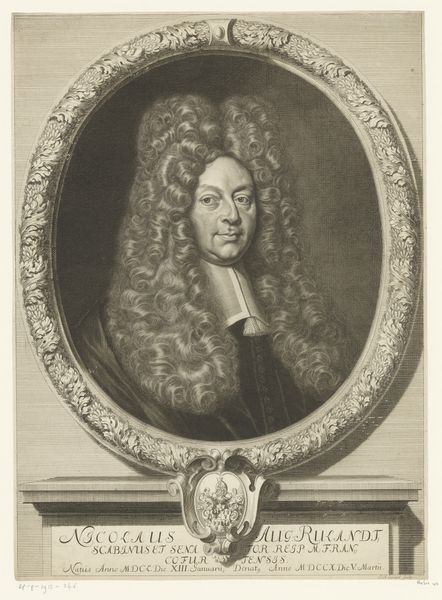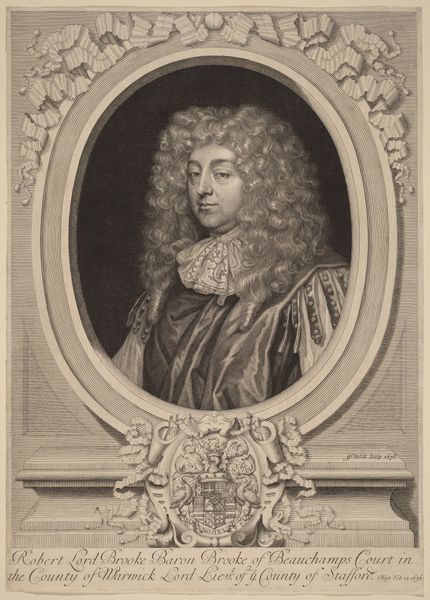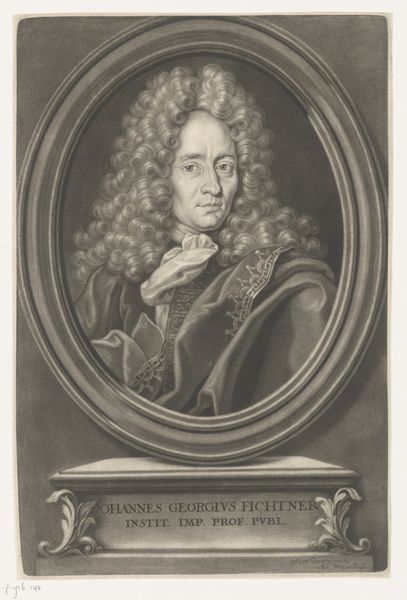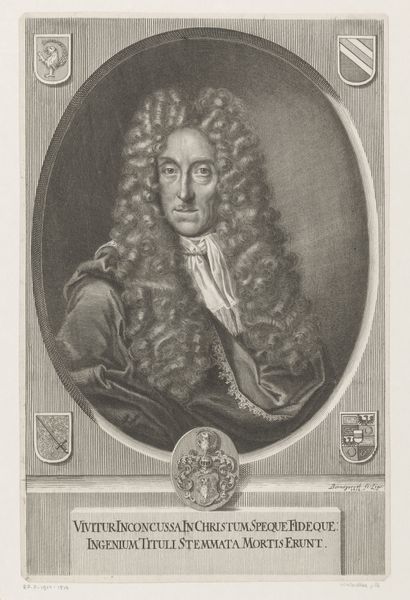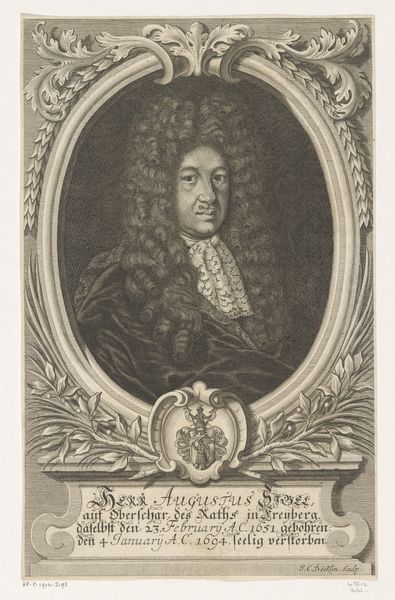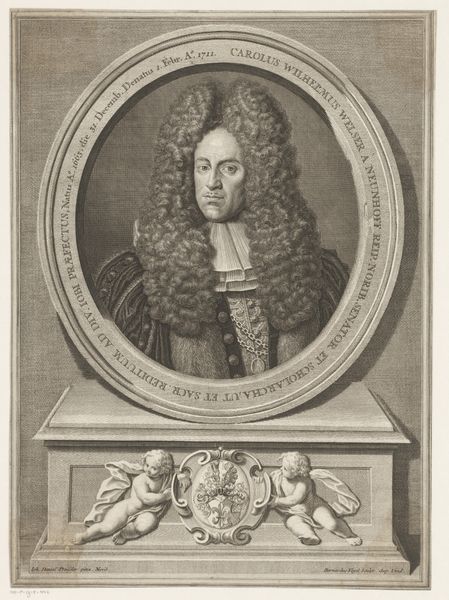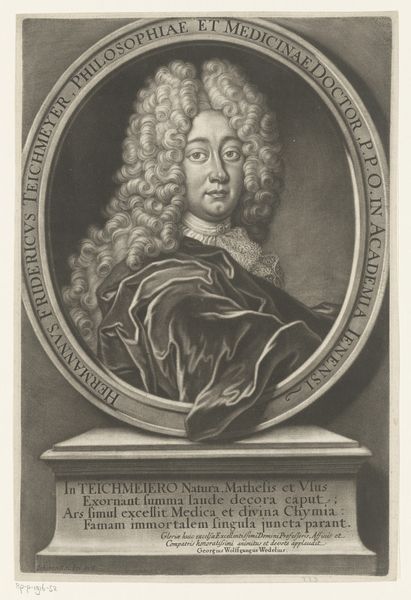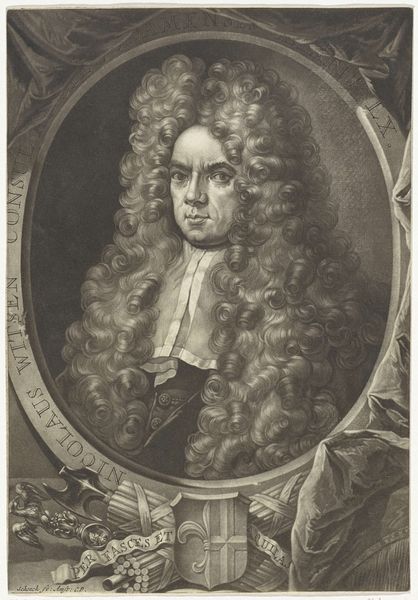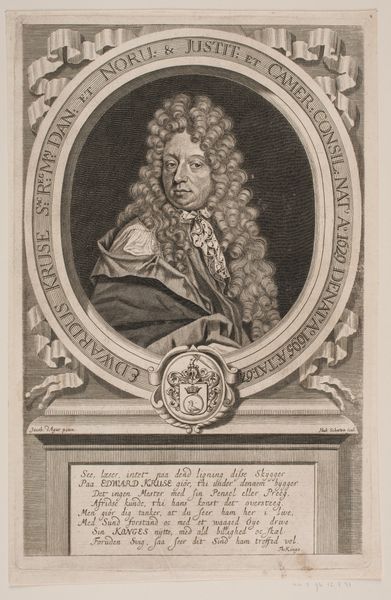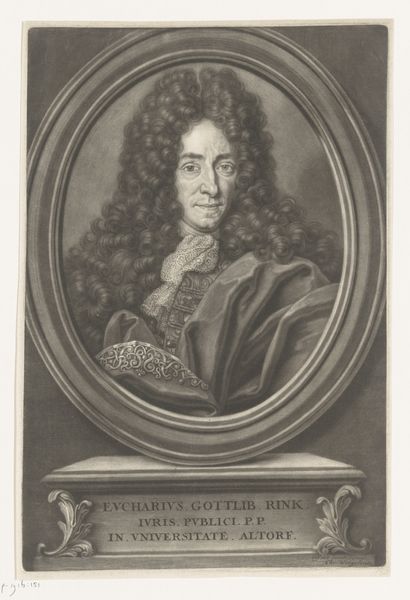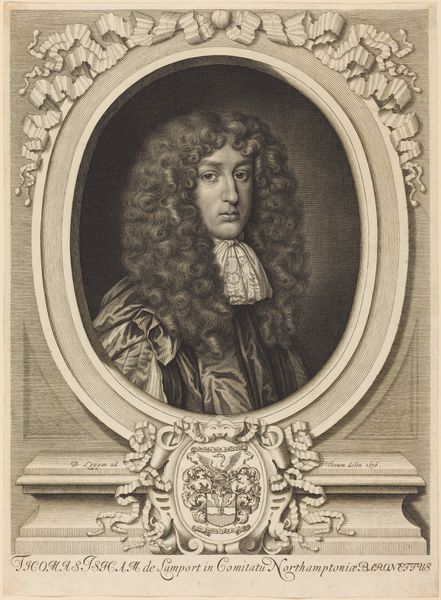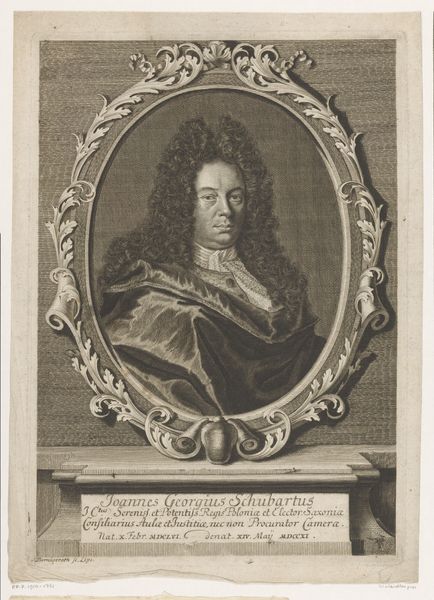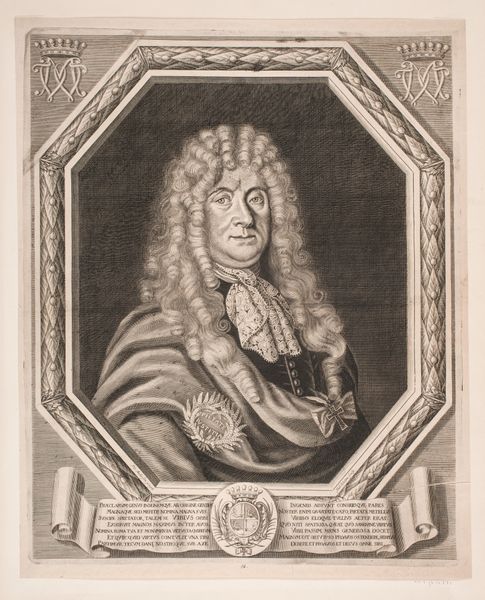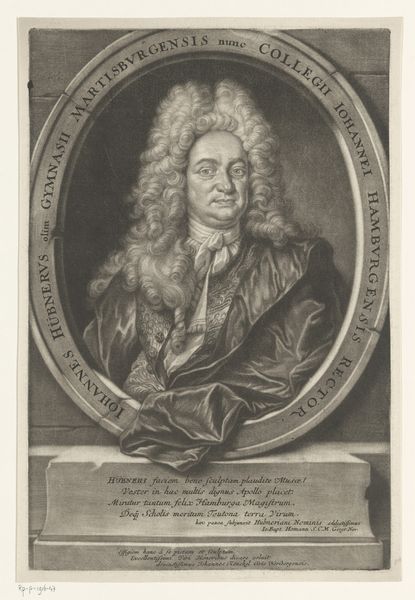
print, engraving
#
portrait
#
baroque
# print
#
old engraving style
#
portrait reference
#
history-painting
#
engraving
Dimensions: height 350 mm, width 248 mm
Copyright: Rijks Museum: Open Domain
Editor: This is a portrait of Ferdinand Ernst von Mollaert by Christoph Weigel, dating from between 1664 and 1725. It's an engraving, and the detail is quite striking. I'm drawn to the rather theatrical presentation of the subject – the wig, the oval frame, and the heraldry. What can you tell me about the social context surrounding a portrait like this? Curator: Indeed, this engraving provides insight into the self-presentation and public image cultivated within the upper echelons of society at the time. Consider the function of portraiture in the baroque era. How might this image be perceived differently compared to, say, a candid photograph today? Editor: Well, now we have photography, we capture more candid pictures to convey more spontaneous situations; portraiture was meant to glorify the sitter to inspire awe, and establish legacy. Curator: Precisely. Engravings like this were often commissioned and circulated to bolster the sitter's prestige and standing, weren't they? It's about constructing and disseminating an image of power and authority within very specific social and political networks. The heraldry, the elaborate wig – these are not mere decorative elements. They are deliberate signifiers of status and lineage. How do you think the context of viewing changes when this is in the public domain like this, in the Rijksmuseum for example? Editor: That’s interesting. Seeing it in a museum today certainly strips away some of that intended power. Now, we’re looking at it more critically, as an artifact of a bygone era, rather than an active assertion of power. Curator: Exactly! The museum becomes a space where those historical power dynamics can be analyzed and interpreted. We move away from simply accepting the image at face value and towards understanding how it functioned – and continues to function – within different cultural and political landscapes. It asks a lot of interesting questions about the accessibility and democratization of history, doesn’t it? Editor: Absolutely. It gives me a completely different way to look at the artwork. Thanks for helping me think it through!
Comments
No comments
Be the first to comment and join the conversation on the ultimate creative platform.
